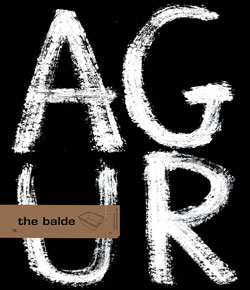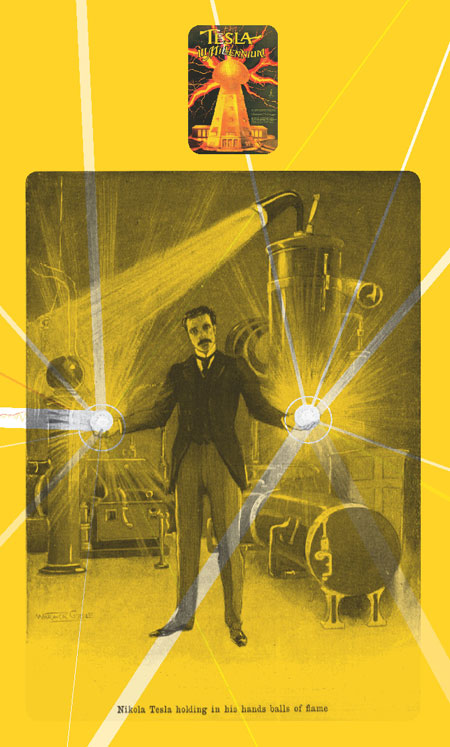nikola tesla
In 1915, the Reuters agency reported that Thomas Edison and Nikola Tesla would win the Nobel Prize for Physics. As soon as he heard the news, and despite living in extreme poverty, Nikola Tesla said he would not accept the prize together with Edison. So the judges for the Nobel Prize decided to give it to neither of them. That refusal by Nikola Tesla, was just another example of the contentious relationship the two scientists had throughout their whole lives. Nikola Tesla was born in the town of Similjan (Croatia) in the then Austro-Hungarian Empire in 1856. He showed his special abilities in mathematics and science from an early age. His father was a church man and he wanted his son to follow in his footsteps, but the young Nikola much preferred to invent mechanical contraptions that would help his mother with the housework. He studied mechanical and electrical engineering in
Austria and upon finishing, he studied physics in the then Czechoslovakia. He started to work for an electrical company but in 1884, at the age of 28, he set out for New York with a little money he had saved and an introductory letter his boss had given him for Thomas Edison. The letter read as follows: ”Mister Edison: in our line of work I know two great men. You are one of them, the other one is the young man who bears this letter.”
At that time, Edison employed many engineers in his company even though he signed all the patents for any inventions in his name. He took on the young engineer Tesla who was then working on a continuous current system. Edison, along with others, was an owner of the electricity company that provided the power to light up New York and he set Tesla to work on creating new generators for his continuous current. Tesla was responsible for many productive inventions that Edison patented in his own name. When he asked Edison for the $50,000 that he had promised him for his work, Edison refused saying it was all an “American” joke. As if to rub salt in the wound, when Tesla asked for a raise to his $25 dollar a week wage, Edison refused again. Hurt by the meanness of the man that he had hitherto admired, Tesla, left the company. Soon after, The Westinghouse Corporation turned up on the scene and gave Tesla a job and they offered him a laboratory to work in. Tesla was soon devoting himself to alternate current. In a few short years, he developed alternate current and proved it was much better than Edison’s direct current. The ¨War of the Currents¨ was soon underway between the two companies. The one developed by Tesla won of course, and that’s the type of power that feeds into the plugs in our houses today.
You could say that Nikola Tesla is the least known and most forgotten ot the geniuses of the 20th Century. The biggest reason for that is Tesla’s mysterious character. He was one of the brightest men of his times but he was also rather strange. He was never bothered by the money problems that plagued him and he never tried to sell himself like so many other inventors at that time. It even got to the point where he witnessed another man, the very Marconi, receive a Nobel Prize for something he invented (in 1943, a few years after his death, the American high court accepted that Marconi’s radio apparatus used 17 of Tesla’s patents). But Tesla always clouded himself in mystery. His special talents and ability to create and invent things was both amazing and frightening at the same time. He carried out strange special secret experiments and he developed concepts that nobody else understood at the time. Many people believe that he slowly went crazy with the passing of time. Rumors of his competency began to spread as well. Many of his experiments had no scientific base and Tesla was also a follower of the hidden sciences. And that’s not surprising. After all, his intellectual capacity was way ahead of his contemporary scientists’ time and he needed to look for answers somewhere else. In that search, he came up with hundreds of inventions that are currently applied in robotics, electricity, x-rays, weapons development, mechanics, optics, computing, astronomy, nuclear energy, meteorology, medicine... much of the technology used is based on Tesla’s research and discoveries.
Austria and upon finishing, he studied physics in the then Czechoslovakia. He started to work for an electrical company but in 1884, at the age of 28, he set out for New York with a little money he had saved and an introductory letter his boss had given him for Thomas Edison. The letter read as follows: ”Mister Edison: in our line of work I know two great men. You are one of them, the other one is the young man who bears this letter.”
At that time, Edison employed many engineers in his company even though he signed all the patents for any inventions in his name. He took on the young engineer Tesla who was then working on a continuous current system. Edison, along with others, was an owner of the electricity company that provided the power to light up New York and he set Tesla to work on creating new generators for his continuous current. Tesla was responsible for many productive inventions that Edison patented in his own name. When he asked Edison for the $50,000 that he had promised him for his work, Edison refused saying it was all an “American” joke. As if to rub salt in the wound, when Tesla asked for a raise to his $25 dollar a week wage, Edison refused again. Hurt by the meanness of the man that he had hitherto admired, Tesla, left the company. Soon after, The Westinghouse Corporation turned up on the scene and gave Tesla a job and they offered him a laboratory to work in. Tesla was soon devoting himself to alternate current. In a few short years, he developed alternate current and proved it was much better than Edison’s direct current. The ¨War of the Currents¨ was soon underway between the two companies. The one developed by Tesla won of course, and that’s the type of power that feeds into the plugs in our houses today.
You could say that Nikola Tesla is the least known and most forgotten ot the geniuses of the 20th Century. The biggest reason for that is Tesla’s mysterious character. He was one of the brightest men of his times but he was also rather strange. He was never bothered by the money problems that plagued him and he never tried to sell himself like so many other inventors at that time. It even got to the point where he witnessed another man, the very Marconi, receive a Nobel Prize for something he invented (in 1943, a few years after his death, the American high court accepted that Marconi’s radio apparatus used 17 of Tesla’s patents). But Tesla always clouded himself in mystery. His special talents and ability to create and invent things was both amazing and frightening at the same time. He carried out strange special secret experiments and he developed concepts that nobody else understood at the time. Many people believe that he slowly went crazy with the passing of time. Rumors of his competency began to spread as well. Many of his experiments had no scientific base and Tesla was also a follower of the hidden sciences. And that’s not surprising. After all, his intellectual capacity was way ahead of his contemporary scientists’ time and he needed to look for answers somewhere else. In that search, he came up with hundreds of inventions that are currently applied in robotics, electricity, x-rays, weapons development, mechanics, optics, computing, astronomy, nuclear energy, meteorology, medicine... much of the technology used is based on Tesla’s research and discoveries.



